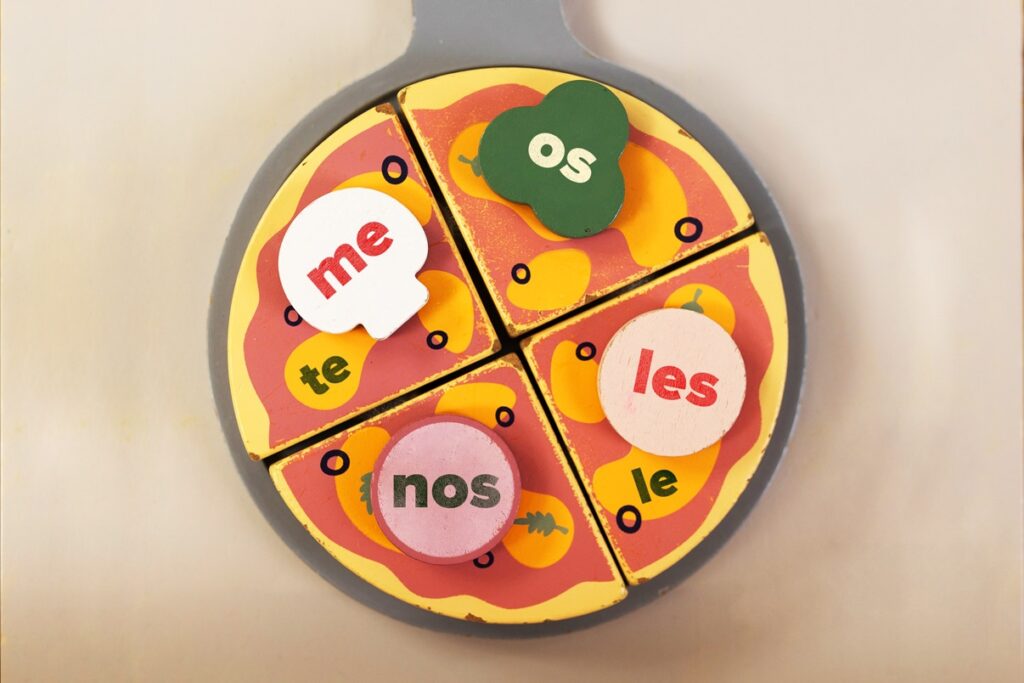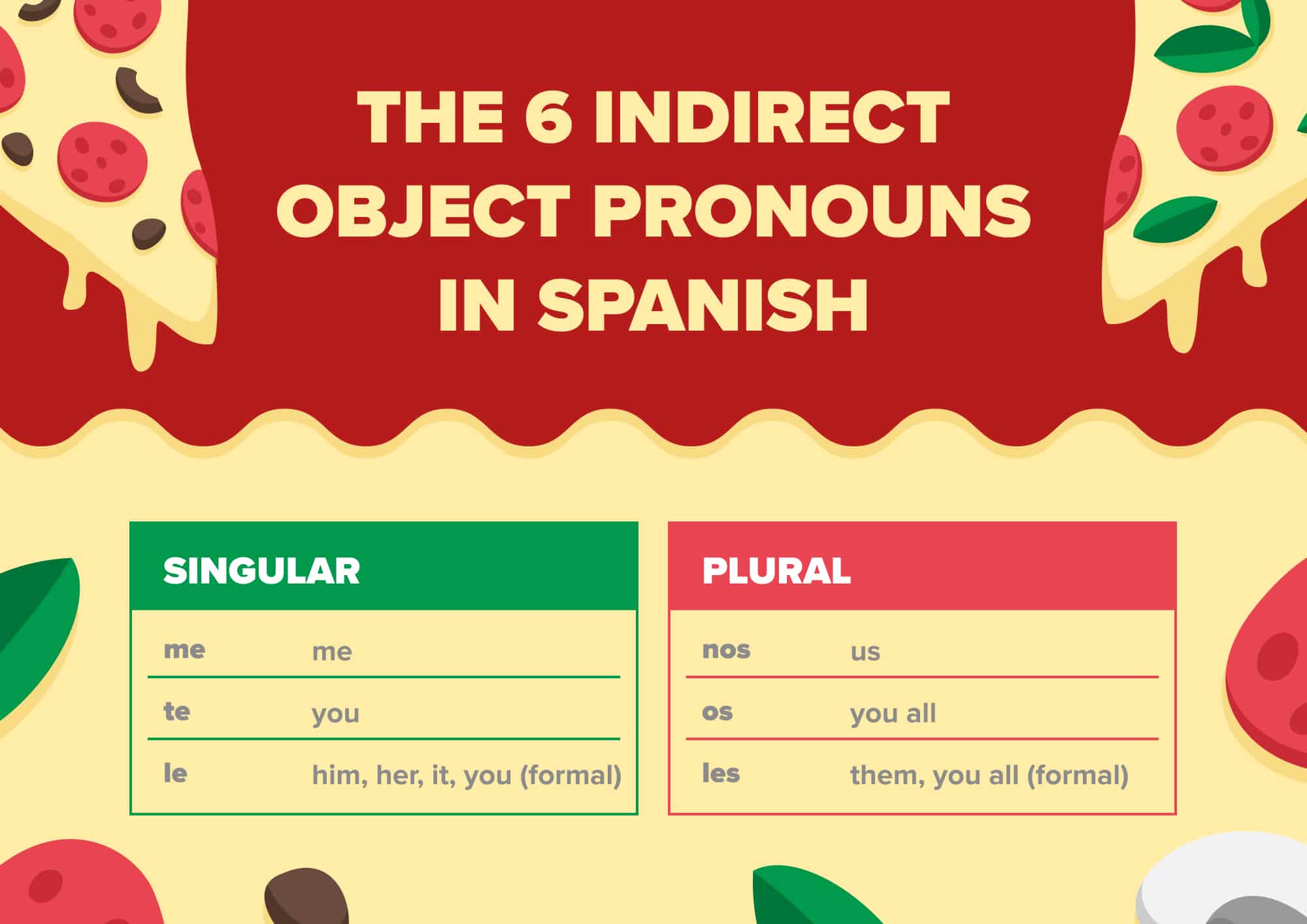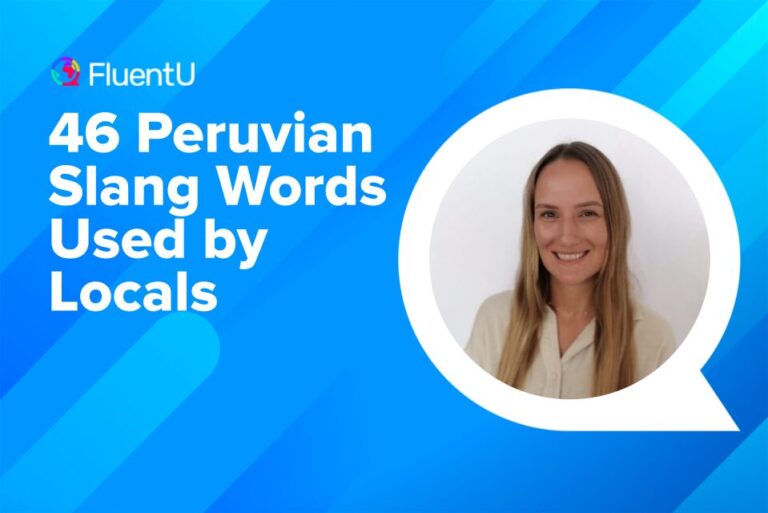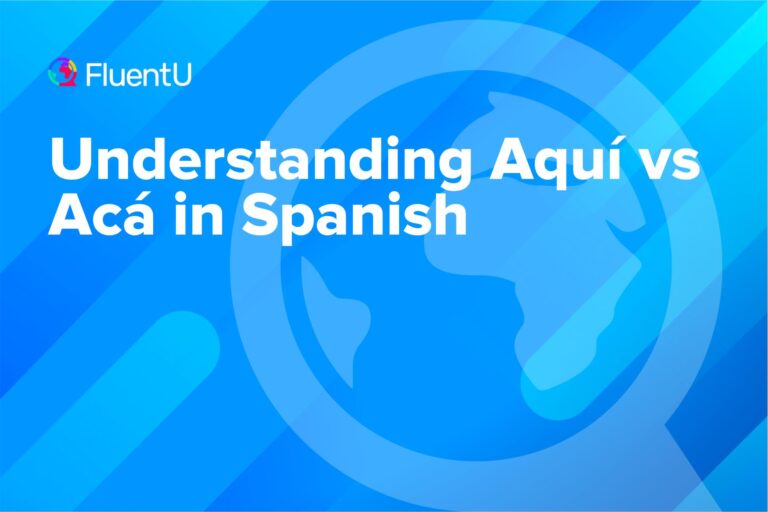Contents
- What Are the Spanish Indirect Object Pronouns?
- Spanish Verbs That Take Indirect Object Pronouns
- How to Use Spanish Indirect Object Pronouns
- Using the Preposition A with Le and Les
- Word Order When Using Direct and Indirect Object Pronouns in Spanish
- Common Mistakes to Avoid When Using Spanish Indirect Object Pronouns
- Spanish Indirect Object Pronouns Quiz
- And One More Thing…
Indirect Object Pronouns in Spanish [Quiz Included]

Indirect object pronouns help you sound more natural. They’re words that replace nouns to make you sound less repetitive, like “it.” But what do indirect object pronouns in Spanish look like, and how do they work?
In this post, you’ll learn the six Spanish indirect object pronouns, their meanings, some common verbs that use them, how to use them and more.
Download: This blog post is available as a convenient and portable PDF that you can take anywhere. Click here to get a copy. (Download)
What Are the Spanish Indirect Object Pronouns?

There are six indirect object pronouns in Spanish:
- me (me — singular)
- te (you — singular)
- le (him, her, you — formal and singular)
- nos (us — plural)
- os (you all — plural)
- les (them, you all — formal and plural)
Indirect object pronouns (also known as pronombre de objeto indirecto ) answer the question “to whom” or “for whom.” They receive the direct object—the thing being acted upon.
For example:
Yo compré pizza para mi familia. (I bought pizza for my family.)
Here, the pizza is the direct object, because it’s what you bought. But mi familia (my family) is the indirect object because they’re the recipient of the direct object and are indirectly affected by the action of the verb.
Therefore, if you’re going to use an indirect object pronoun for the above sentence, you’d say:
Yo les compré pizza. (I bought pizza for them.)
If you’ve already learned the direct object pronouns, you might’ve noticed that these are identical, except for the third-person pronouns le and les.
Here’s how they’d look in action:
| Spanish Indirect Object Pronouns | Example Sentence |
|---|---|
| me
(me — singular) | María me dio un regalo sorpresa.
(Maria gave me a surprise gift.) |
| te
(you — singular) | Te compré un libro que sé que disfrutarás.
(I bought you a book that I know you will enjoy.) |
| le
(him, her, you — formal and singular) | Mi abuela está enferma, así que le envié una carta.
(My grandmother is sick, so I sent her a letter.) |
| nos
(us — plural) | ¿Nos podrías prestar tu coche para el fin de semana?
(Could you lend us your car for the weekend?) |
| os
(you all — plural) | ¿Os han dicho los resultados de los exámenes?
(Have they told you (all) the exam results?) |
| les
(them, you all — formal and plural) | Les envié las invitaciones por correo electrónico.
(I sent them the invitations by email.) |
Spanish Verbs That Take Indirect Object Pronouns
Some verbs are more likely to use indirect object pronouns than others. As you’ll see, they’re the ones that often involve giving something (concrete or abstract) to someone—or, put in another way, someone receiving something.
Here are 13 of the most common Spanish verbs that take indirect object pronouns:
| Spanish Verbs That Take Indirect Objects | Example Sentence |
|---|---|
| dar
(to give) | Le di un regalo.
(I gave him/her a gift.) |
| decir
(to say, to tell) | Te digo la verdad.
(I'm telling you the truth.) |
| enseñar
(to teach) | Mi maestra me enseñó matemáticas.
(My teacher taught me mathematics.) |
| contar
(to tell, to count) | Ella nos contó una historia.
(She told us a story.) |
| mostrar
(to show) | Les mostré el camino.
(I showed them the way.) |
| prestar
(to lend) | Te presté mi libro.
(I lent you my book.) |
| mandar
(to send) | Le mandé una carta.
(I sent him/her a letter.) |
| explicar
(to explain) | Ana me explicó la lección.
(Ana explained the lesson to me.) |
| devolver
(to return something) | Le devolví el dinero.
(I returned the money to him/her.) |
| ofrecer
(to offer) | Les ofrecí ayuda.
(I offered them help.) |
| hacer
(to do, to make) | Les hice un pastel.
(I made them a cake.) |
| poner
(to put, to place) | Te puse la comida en la mesa.
(I put the food on the table for you.) |
| traer
(to bring) | Mamá me trajo un regalo.
(Mom brought me a gift.) |
How to Use Spanish Indirect Object Pronouns
Here’s how to use indirect object pronouns step-by-step:
First, find the indirect object in a sentence. To do this, you need to ask “to/for what?” and “to/for whom?” For example:
Ella compra un regalo para mí. (She is buying a present for me.)
Escribo una carta para ti. (I am writing a letter for you.)
In the first sentence, mí is the indirect object because she’s buying the gift for “me.” In the second sentence, ti is the indirect object because I’m writing a letter for “you.”
Next, identify the corresponding indirect object pronoun. In the first example, the indirect object pronoun for mí would be me . Likewise, the indirect object pronoun for ti would be te .
Third, use it in the sentence. The indirect object pronoun can be placed before the verb or attached to the end of it. Typically, when you’re dealing with conjugated verbs, you put the indirect object pronoun before the verb. Using our example sentences:
Ella me compra un regalo. (She is buying me a present.)
Te escribo una carta. (I am writing you a letter.)
When attached at the end of the verb, it’s normally when you’re dealing with an infinitive, a progressive tense or an imperative. For example:
| Type of Verb | Example Sentence | Explanation |
|---|---|---|
| Infinitive | Me gusta leerlo.
(I like to read it.) | In the infinitive form, the indirect object pronoun ( le ) comes at the end of the verb ( leer or "to read") without any changes. The pronoun is attached to the infinitive. |
| Gerund | Estoy haciéndolo.
(I am doing it.) | In the progressive form, the indirect object pronoun ( lo
) is placed at the end of the gerund ( haciendo
or "doing"). The pronoun is attached to the gerund, maintaining the -iendo/-ando ending. Note there's an accent mark on the stressed e. In Spanish, proparoxytones (words whose stressed syllable is on their third-to-the-last syllable) must always have an accent mark, so make sure to add one to the stressed vowel in the resulting gerund—either the e in -iendo or the a in -ando. |
| Imperative | Hazlo rápido.
(Do it quickly.) | In the affirmative imperative form, the indirect object pronoun ( lo
) is attached to the verb ( haz
or "to do"), coming after it. An accent mark on the imperative's stressed vowel may be necessary depending on whether the resulting word is a proparoxytone. You can learn more about Spanish accentuation rules here. |
I know this can all sound very confusing. After all, how do you even figure out whether to put the indirect object pronoun before the verb or after?
Well, one great way is to expose yourself to a lot of authentic Spanish content. For example, you can use FluentU to watch tons of native Spanish videos and find infinite amounts of indirect object pronouns.
FluentU takes authentic videos—like music videos, movie trailers, news and inspiring talks—and turns them into personalized language learning lessons.
You can try FluentU for free for 2 weeks. Check out the website or download the iOS app or Android app.
P.S. If you decide to sign up now, you can take advantage of our current sale!

Using the Preposition A with Le and Les
Some Spanish verbs follow the pattern “verb + something + a + somebody” when they use the indirect object pronouns le and les . You’ll hear this all the time in sentences about giving or saying something to someone.
You can say who the recipient is by using the preposition a . For example:
Le doy caramelos a él. (I give him some sweets.)
Some other examples of double indirect objects are:
Le escribo una carta a María. (I write a letter to María.)
Le compro un coche a él. (I buy him a car.)
Les doy un regalo a los niños. (I give the kids a present.)
Note that the preposition a doesn’t have one fixed meaning. Instead, it can vary depending on the context.
Word Order When Using Direct and Indirect Object Pronouns in Spanish
When there’s a direct and indirect object pronoun in a sentence, there’s a specific word order you need to follow. In one special case, le and les change to se.
First, indirect object pronouns go before direct object pronouns. The direct object is normally a thing, and the indirect object is typically a person. This rule is easy to follow when you think of it that way. Simply put the person first. If you’re more of a formula person:
indirect object pronoun + direct object pronoun + verb
Examples:
Ella me lo dio. (She gave it to me.)
Te lo enviaré mañana. (I will send it to you tomorrow.)
Second, lo is the direct object pronoun and le is the indirect object pronoun. When both pronouns are used together, the indirect object pronoun le changes to se .
Take a look at these:
Él se lo dio. (He gave it to him/her/them.)
Ella se lo explicó. (She explained it to him/her/them.)
Ellos se lo compraron. (They bought it for him/her/them.)
Here’s a table showing how the changes would take place across different scenarios:
| Original | Correct |
|---|---|
| le lo | se lo |
| le la | se la |
| le los | se los |
| le las | se las |
| les lo | se lo |
| les la | se la |
| les los | se los |
| les las | se las |
Common Mistakes to Avoid When Using Spanish Indirect Object Pronouns
Indirect object pronouns in Spanish can be tricky for learners, and there are several common mistakes you’ll want to watch out for. Here are some of them:
- Incorrect Placement. Indirect object pronouns should be placed before the conjugated verb or attached to the end of an infinitive or gerund. Some learners mistakenly place them after the conjugated verb. Example:
Incorrect: Quiero te ayudar. (I want to help you.)
Correct: Te quiero ayudar. (I want to help you.)
Correct: Quiero ayudarte. (I want to help you.)
- Confusing Le and Les. The indirect object pronouns le and les are often used for both masculine and feminine singular and plural, which can be confusing. However, le is singular, while les is plural. If the indirect object is plural, use les regardless of gender. Example:
Incorrect: Le di el libro a los chicos. (I gave the book to the boys.)
Correct: Les di el libro a los chicos. (I gave the book to the boys.)
- Using le(s), la(s), or lo(s) together. As I mentioned earlier, sometimes you’ll use a direct object pronoun and an indirect object pronoun in the same sentence. When this happens, watch out for pronoun combinations like le la, les lo, le los, etc. Remember: if you have two pronouns starting with l right next to each other, the first one will always change to se! Example:
Incorrect: Vi una rosa y le la di. (I saw a rose and I gave it to him/her.)
Correct: Vi una rosa y se la di. (I saw a rose and I gave it to him/her.)
Incorrect: Ellos entendieron los temas en cuanto les los expliqué. (They understood the subjects as soon as I explained them [to them].)
Correct: Ellos entendieron los temas en cuanto se los expliqué. (They understood the subjects as soon as I explained them [to them].)
Spanish Indirect Object Pronouns Quiz
Now that you’ve got a decent idea on how Spanish indirect object pronouns work, let’s see how much you remember.












Learning to use indirect object pronouns in Spanish doesn’t just make you sound more fluent—it’s also more convenient! So make sure to drill this concept until you’ve got a rock-solid handle on it.
And One More Thing…
If you've made it this far that means you probably enjoy learning Spanish with engaging material and will then love FluentU.
Other sites use scripted content. FluentU uses a natural approach that helps you ease into the Spanish language and culture over time. You’ll learn Spanish as it’s actually spoken by real people.
FluentU has a wide variety of videos, as you can see here:

FluentU brings native videos within reach with interactive transcripts. You can tap on any word to look it up instantly. Every definition has examples that have been written to help you understand how the word is used. If you see an interesting word you don’t know, you can add it to a vocab list.

Review a complete interactive transcript under the Dialogue tab, and find words and phrases listed under Vocab.

Learn all the vocabulary in any video with FluentU’s robust learning engine. Swipe left or right to see more examples of the word you’re on.

The best part is that FluentU keeps track of the vocabulary that you’re learning, and gives you extra practice with difficult words. It'll even remind you when it’s time to review what you’ve learned. Every learner has a truly personalized experience, even if they’re learning with the same video.
Start using the FluentU website on your computer or tablet or, better yet, download the FluentU app from the iTunes or Google Play store. Click here to take advantage of our current sale! (Expires at the end of this month.)







